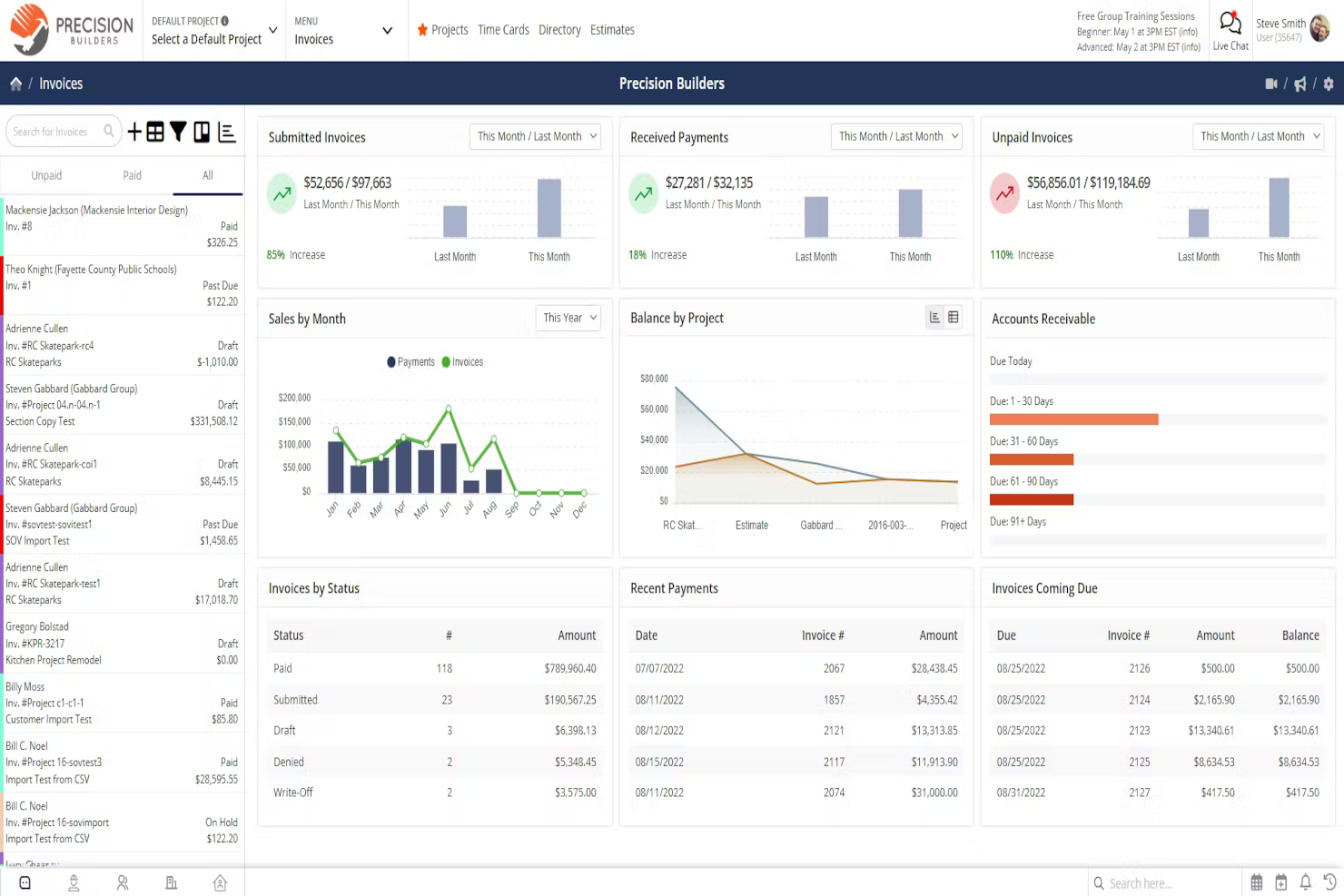Customized Building Administration Software Program: Optimizing Source Allocation and Budgeting Techniques
In the world of modern-day building monitoring, the importance of tailored software solutions can not be overemphasized. These advanced devices provide a nuanced approach to enhancing resource appropriation and budgeting strategies, crucial elements for successful project execution. By delving into the complexities of just how such software application can enhance resource allowance approaches and fine-tune spending plan optimization techniques, a clear pathway towards increased project performance emerges. In this electronic age where accuracy and effectiveness preponderate, discovering the impact of customized building and construction management software program on these vital elements discovers a world of possibilities that can shape the future of the sector.
Benefits of Tailored Software Application Solutions
Tailored software remedies use a myriad of advantages to construction monitoring companies seeking to boost effectiveness and improve procedures. By tailoring software solutions to address task monitoring, scheduling, budgeting, and resource allocation, companies can maximize their process and accomplish greater performance.
An additional advantage of tailored software program options is the capability to provide real-time understandings and analytics. Building monitoring companies can take advantage of data-driven decision-making to keep track of task development, identify traffic jams, and make modifications promptly. This aggressive method enhances job outcomes and helps companies stay on track with timelines and budgets.

Improved Source Allotment Approaches
Executing reliable resource allowance approaches is important for building and construction management companies to maximize project results and make the most of efficiency. Boosted resource allowance approaches involve tactically appointing personnel, equipment, and materials to certain jobs to ensure ideal use of sources. One key element of enhanced resource allowance is the capacity to accurately forecast task requirements and assign resources appropriately. By leveraging building and construction monitoring software that provides real-time tracking and reporting functions, firms can dynamically change allowances as task requires advance, resulting in boosted effectiveness and cost-effectiveness.
In addition, improved resource allocation methods allow building firms to recognize and resolve prospective bottlenecks or source restrictions proactively. By conducting normal evaluations of resource application and efficiency metrics, managers can make data-driven decisions to redistribute sources successfully and avoid hold-ups. This positive approach not just enhances task timelines however also lessens the risk of budget plan overruns due to ineffective resource appropriation.
Budget Plan Optimization Techniques
To accomplish optimal economic efficiency in building and construction projects, reliable budget optimization strategies play a crucial function in guaranteeing price control and job success. One vital method is the facility of a detailed job spending plan that assigns sources based on concern and critical demands. By clearly specifying the extent of work, setting practical cost quotes, and continually monitoring costs, building and construction supervisors can identify prospective expense overruns early on and take corrective actions. In addition, implementing value engineering methods can aid weblink simplify project costs without jeopardizing top quality. This entails examining each task part to identify opportunities for expense financial savings while keeping efficiency criteria. Leveraging historical data and industry benchmarks enables building and construction supervisors to make enlightened choices concerning spending plan appropriations and recognize locations where costs can be optimized. By integrating these budget optimization strategies right into building administration software application, project stakeholders can enhance economic preparation, resource allotment, and overall spending plan monitoring to drive project success and profitability.

Influence On Project Performance
Maximizing construction administration software application can dramatically enhance job effectiveness by simplifying interaction, improving collaboration, and promoting data-driven decision-making. Additionally, construction administration software application can supply beneficial understandings via information analytics, permitting project managers to make informed decisions quickly and accurately.
Furthermore, the automation of routine jobs More Info such as scheduling, budget tracking, and source allocation can maximize valuable time for project groups to concentrate on essential tasks, inevitably quickening task shipment. The capability to keep an eye on job development in real-time and identify potential bottlenecks makes it possible for aggressive analytic, stopping problems from escalating and causing hold-ups. On the whole, the effect of tailored construction administration software on project performance is indisputable, providing a competitive benefit by enhancing workflows and taking full advantage of productivity.
Future Trends in Building And Construction Software Program
As the building industry remains to develop, innovations in innovation are shaping the future landscape of building and construction software application solutions. One substantial pattern on the horizon is the raising combination of expert system (AI) and machine understanding abilities in building and construction software application. These modern technologies have the potential to transform just how construction jobs are taken care of by allowing anticipating analytics, automated decision-making processes, and boosted project insights.
An additional future trend in building and construction software is the growing focus on cloud-based services. Cloud innovation offers boosted adaptability, scalability, and availability for building and construction teams, enabling real-time collaboration and data sharing across job stakeholders. This change towards cloud-based software application is anticipated to boost job performance, improve interaction, and boost overall project outcomes.
Additionally, the rise of Building Info Modeling (BIM) is more information anticipated to continue forming the building and construction software landscape. BIM software program facilitates 3D modeling, visualization, and data management, resulting in enhanced task sychronisation, reduced errors, and boosted task outcomes. Welcoming these future patterns in building and construction software will be vital for companies wanting to stay affordable and drive technology in the market.
Final Thought
To conclude, tailored construction management software program supplies many benefits such as enhanced source appropriation approaches and budget plan optimization techniques. This software has a substantial influence on job efficiency by simplifying procedures and improving total efficiency (construction software). As innovation proceeds to development, future trends in building software application are anticipated to additional optimize source allocation and budgeting approaches for building tasks